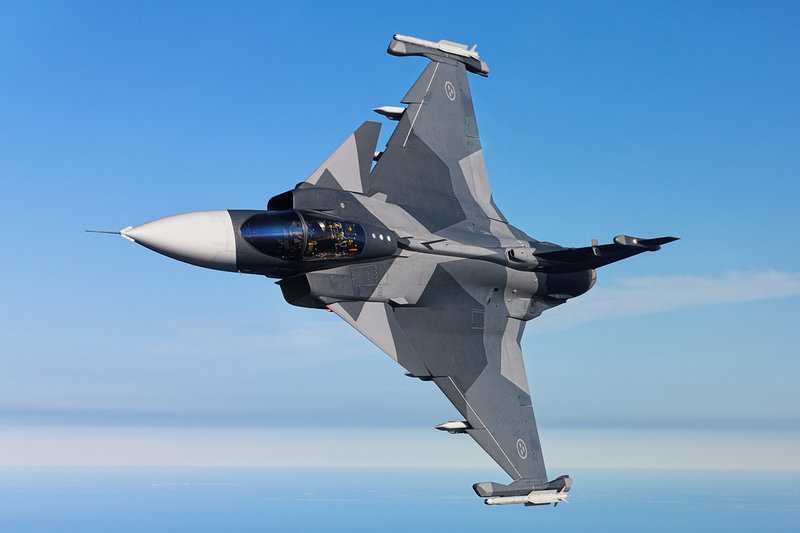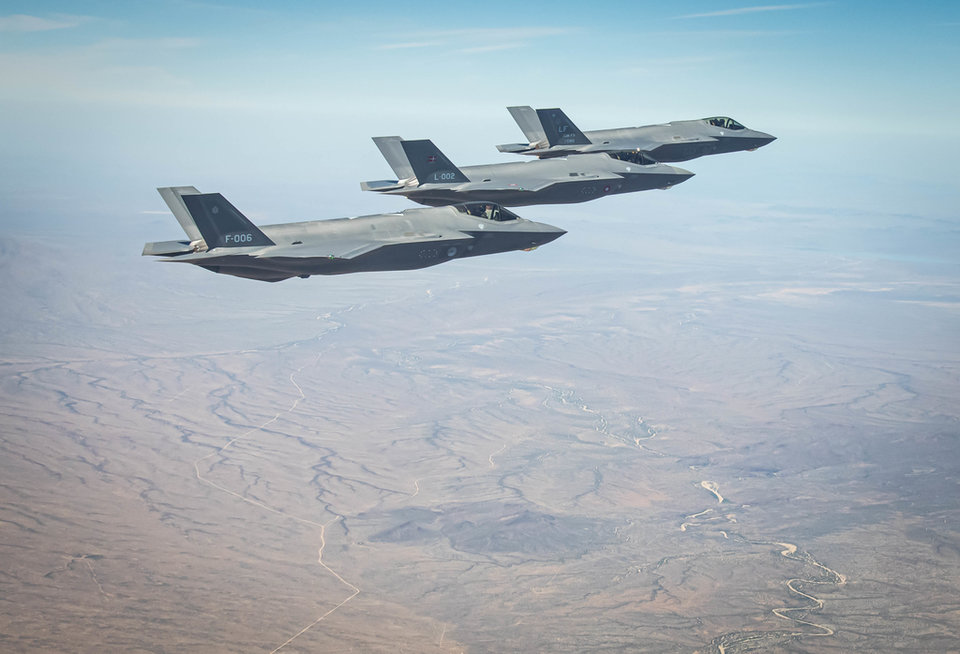Combat air
Is Prague’s F-35 decision checkmate for Europe’s fourth-gen fighter offerings?
The Czech Republic’s announced intention to negotiate for the F-35 is another feather in the cap of the undefeated US-designed fighter. Richard Thomas explores the platform’s recent run of success.
The decision by the Czech Republic earlier in July to begin negotiations to acquire the fifth-generation F-35 multi-role stealth fighter represented another milestone in the platform’s growing presence among Europe’s future combat air fleet.
In an announcement on 20 July, the Czech Ministry of Defence (MoD) said that following governmental deliberations, it was decided that Defence Minister Jana Černochová would begin negotiations with the US to procure the F-35 Lightning II. The country currently operates fourth-generation Saab Gripen C fighters on a lease basis.
“I was authorised to form an inter-ministerial negotiating team and commence negotiations with the United States Government to procure 24 units of the F-35 Lightning II multirole fighters to equip two squadrons,” Černochová said after the Czech cabinet session.
With the lease on its current 14 Gripen C fighters running until 2027, with an option for an additional year, the Czech fighter replacement programme was considered key for Swedish defence OEM Saab in a bid to market its Gripen E platform into the Czech Republic. The Swedish and the Czech governments signed an MoU for the lease of 14 Gripen C fighters in June 2004, with the first six aircraft arriving less than one year later.
Saab CEO Micael Johansson, speaking during the company’s Q2 performance briefing on 21 July, noting the Czech statement, said that the company would be presenting Prague with an option on the E-variant.
“It is a fact we have a very successful Gripen programme in the Czech Republic, they are pleased with the system. [The Gripen C] is completely upgradable, and they could seamlessly go into the E-version if they like, which would be extremely efficient,” Johansson said.
“So, we are going to give them an attractive proposal. If they want to go have a discussion with the US, that’s up to them,” Johansson said, adding that the decision “was not done yet”.

// Saab’s Gripen E is an evolution of the C model and would offer continuity for the Czech Republic in terms of logistics and sustainment. However, Prague is seeking the F-35 from Lockheed Martin. Credit: Saab
However, the reasoning given by the Czech Republic to seek to begin negotiations for the F-35, and in doing so opt against a continuation with the Gripen platform, was definitive. In the MoD statement, Černochová said the decision was based on analysis that stated only a fifth-generation fighter solution would be able to meet the mission requirements of the future battlespace.
Adding in lead times for platform procurement, a potential scarcity of key materials, and, for the Czech Republic, the choice was clear. “We must not hesitate, because the lead times take years,” Černochová said.
European hegemony
Over the course of little more than a year, the F-35 has either triumphed, or been announced as the preferred choice, in four European fighter programmes. In 2021, the aircraft was selected by landlocked Switzerland to replace its F/A-18 fighters, with Finland following suit at the end of the year in what was a straight shoot between the F-35 and Saab’s Gripen E. Earlier in 2022, Germany also announced it would seek to buy the F-35, in a noticeable win for US manufacturer Lockheed Martin.
In 2020, Poland also selected the F-35, joining Belgium, Denmark, Italy, the Netherlands, Norway, and the UK as either existing or planned operators of either the conventional take-off and landing F-35A, or the short take-off, vertical landing (STOVL) F-35B.
The F-35 has emerged victorious is every single fighter competition it has entered, little surprise given that it is currently the only western fifth-generation platform on the market. With hundreds of aircraft already delivered to operators around the world, and thousands more on order, economies of scale are also a factor for countries that might not be able to acquire such capabilities were it not the case.
The often limited number of air defence assets places constraints on the ability of states to defend the entirety of the space within their borders.

// Fifth-generation F-35 fighters from the Netherlands, Denmark, and the United States conduct flight training in 2021. Credit: US Department of Defense
Another factor to consider is that Lot 15-17 of the F-35 build programme, which will begin to deliver in the second half of the decade, will incorporate some elements of the Block 4 upgrade to the F-35, the point at which much of the fifth-generation sensor and weapons capability designed into the platform will be unlocked.
“The F-35 Lightning II will represent a highly competitive aircraft even in 2040, whereas the so-called 4+ generation of fighters will have become obsolete by then. In addition, the F-35 is not just a fighter – it provides an aerial capability combining a fighter, air defence element, as well as cutting-edge surveillance and command, control and communication centre… and is able to perform missions that are completely outside the capabilities of the current aircraft,” Czech Chief of General Staff Major General Karel Řehka stated.
Where does this leave Europe’s fourth-generation offerings? Platforms such as the Gripen, Dassault’s Rafale and the pan-continental Eurofighter retain considerable market share, particularly the latter two. However, each of these European fighters has been defeated by the F-35 in open competition and not once emerged victorious when pitted against their US rival.
The decision of countries opting for the F-35 over alternatives is more aimed at the medium term and beyond, as the type matures into the fully-fledged fifth-generation combat aircraft originally promised while the fourth- and 4.5-generation fighters slide towards obsolescence.
A cautionary note should be made, in having a single type so prevalent across NATO’s military structure. Should the stealth capabilities of the F-35 become compromised - see the scramble to recover US, UK, and Japanese jets lost in accidents in the Asia-Pacific and Mediterranean recently – a pillar of the Alliance’s defence posture could begin to crack.
// Main image: Prague's decision to look to acquire the F-35 fighter is the latest European country to opt for the type. Credit: Lockheed Martin/Chris Hanoch